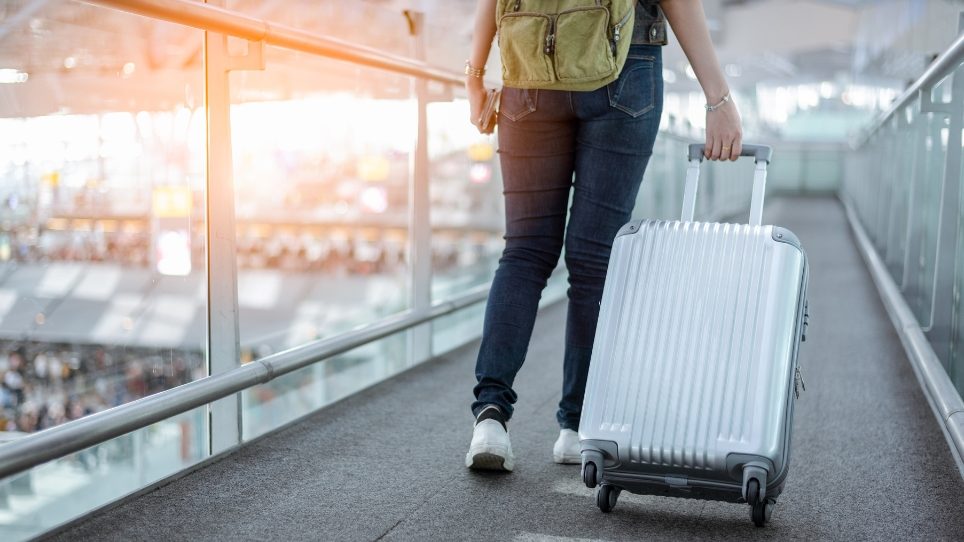Anúncios

Carry-on bag size is a critical consideration for travelers. Understanding airline and TSA restrictions can save you time, money, and hassle. Here, we’ll explore what you need to know about carry-on dimensions, weight limits, and regulations to ensure a smooth travel experience.
Airline Carry-On Size Standards
Major Airline Carry-On Dimensions
Understanding the carry-on bag size standards of major airlines is essential for a smooth travel experience. Airlines like American, Delta, and United typically allow carry-on bags up to 22 x 14 x 9 inches. These dimensions are designed to fit in the overhead bins, ensuring that you can keep your essential items close at hand. However, it’s crucial to remember that these standards can vary slightly.
For instance, while most airlines follow these general dimensions, some may have specific requirements for international flights. Therefore, checking the airline’s website before packing is always a smart move.
Budget Airlines Carry-On Restrictions
When flying with budget airlines such as Southwest, Spirit, and Frontier, it’s important to be aware of their more stringent carry-on policies. For example, Spirit Airlines allows a personal item up to 18 x 14 x 8 inches without additional charges, which is smaller than the standard carry-on size.
This means you’ll need to pack strategically to avoid extra fees. Budget airlines often charge for additional services, so adhering to their carry-on bag size restrictions can help you save money and ensure a hassle-free boarding process.
TSA Carry-On Size and Regulations
TSA Carry-On Dimensions
The Transportation Security Administration (TSA) sets a standard for carry-on sizes to maintain security and order in airports. Generally, the TSA allows bags up to 22 x 14 x 9 inches, which aligns with the dimensions used by most major airlines.
Knowing these dimensions ensures that your carry-on fits within the security guidelines and can be efficiently screened. Additionally, adhering to TSA dimensions helps streamline the boarding process, as your bag will fit in the overhead bins without issue.
TSA Prohibited Items
Equally important is understanding the TSA’s regulations on prohibited items. Items like liquids over 3.4 ounces, sharp objects, and certain electronics are not allowed in your carry-on. Ensuring you do not pack these items will save you time at security checkpoints and prevent the inconvenience of having to discard valuable items.
Reviewing the TSA’s list of prohibited items before you travel can help you pack appropriately and avoid delays. By staying informed and prepared, you can enjoy a smoother and more efficient airport experience.
Maximizing Carry-On Space
Maximizing carry-on space is essential for a stress-free travel experience, allowing you to pack efficiently and avoid extra baggage fees. Start by rolling your clothes instead of folding them, as this technique reduces wrinkles and saves valuable space. Additionally, using packing cubes can help you organize your items neatly and compress them further.
Transitioning from traditional packing methods to innovative tools can make a significant difference. For instance, compression bags can reduce the volume of bulky items like jackets and sweaters. Another effective strategy is to prioritize versatile clothing pieces that can be mixed and matched to create multiple outfits, minimizing the number of items you need to pack.
Moreover, leveraging travel accessories can enhance your packing efficiency. Portable luggage scales ensure you stay within airline weight limits, while multi-functional items like a travel pillow that doubles as a blanket can save space and add convenience. Always remember to utilize every inch of your carry-on, including pockets and compartments, to keep essential items easily accessible and organized.
Tips for Avoiding Overpacking
Overpacking can lead to stress, extra fees, and the hassle of lugging around a heavy bag. The first step in avoiding overpacking is to plan your wardrobe carefully. Stick to essentials and choose versatile clothing items that can be layered and mixed for multiple outfits. Additionally, pack travel-sized toiletries instead of full-size bottles, as many hotels provide basic toiletries. Limit yourself to one or two pairs of shoes, prioritizing comfortable and multi-use options. Making a packing list beforehand can also prevent unnecessary items from sneaking into your carry-on.
Understanding Weight Limits for Carry-On Bags
While most travelers focus on carry-on dimensions, weight limits are equally important, especially for international flights. Airlines like Qantas and Lufthansa impose weight limits ranging from 7 kg to 10 kg (about 15-22 pounds), and these are strictly enforced in some regions. Weighing your bag before leaving for the airport is a good habit to avoid unexpected fees or delays at check-in. Many travelers opt to wear their heaviest clothing items, such as jackets and boots, which helps reduce the weight in their carry-on. A compact luggage scale can also be useful for ensuring compliance with weight restrictions.
Benefits of Packing a Personal Item Strategically
Packing a personal item alongside your carry-on can maximize your storage options. Items like a backpack, tote bag, or small duffel can hold essentials such as electronics, travel documents, snacks, and a small change of clothes. Organizing your personal item effectively allows you to access frequently used items without having to rummage through your carry-on in the overhead bin. When selecting your personal item, aim for a durable, spacious bag that meets your airline’s size requirements. Packing strategically can make airport navigation and in-flight experiences more comfortable and convenient.
Conclusion: Ensuring a Smooth Journey with the Right Carry-On Preparation
Careful preparation with your carry-on can make your travel experience smoother and more enjoyable. By sticking to airline size and weight restrictions and thoughtfully organizing your bag, you can avoid common travel hiccups such as fees or security delays. Understanding TSA restrictions and maximizing space with efficient packing methods further enhances your journey. Whether you’re flying domestically or internationally, a well-prepared carry-on bag can ease travel-related stress, allowing you to focus on enjoying your trip.


